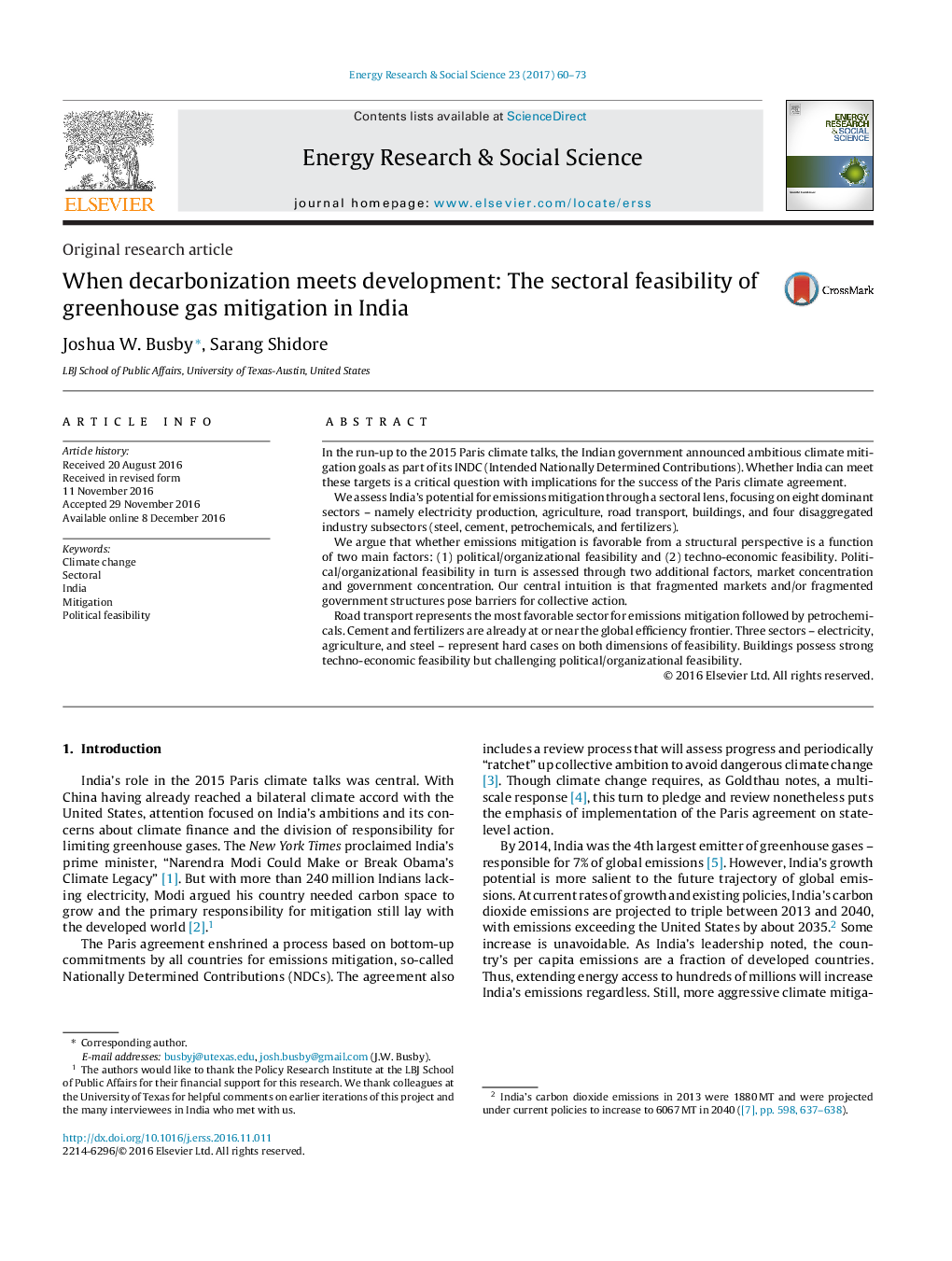| کد مقاله | کد نشریه | سال انتشار | مقاله انگلیسی | نسخه تمام متن |
|---|---|---|---|---|
| 6464085 | 1422578 | 2017 | 14 صفحه PDF | دانلود رایگان |
In the run-up to the 2015 Paris climate talks, the Indian government announced ambitious climate mitigation goals as part of its INDC (Intended Nationally Determined Contributions). Whether India can meet these targets is a critical question with implications for the success of the Paris climate agreement.We assess India's potential for emissions mitigation through a sectoral lens, focusing on eight dominant sectors - namely electricity production, agriculture, road transport, buildings, and four disaggregated industry subsectors (steel, cement, petrochemicals, and fertilizers).We argue that whether emissions mitigation is favorable from a structural perspective is a function of two main factors: (1) political/organizational feasibility and (2) techno-economic feasibility. Political/organizational feasibility in turn is assessed through two additional factors, market concentration and government concentration. Our central intuition is that fragmented markets and/or fragmented government structures pose barriers for collective action.Road transport represents the most favorable sector for emissions mitigation followed by petrochemicals. Cement and fertilizers are already at or near the global efficiency frontier. Three sectors - electricity, agriculture, and steel - represent hard cases on both dimensions of feasibility. Buildings possess strong techno-economic feasibility but challenging political/organizational feasibility.
Journal: Energy Research & Social Science - Volume 23, January 2017, Pages 60-73
